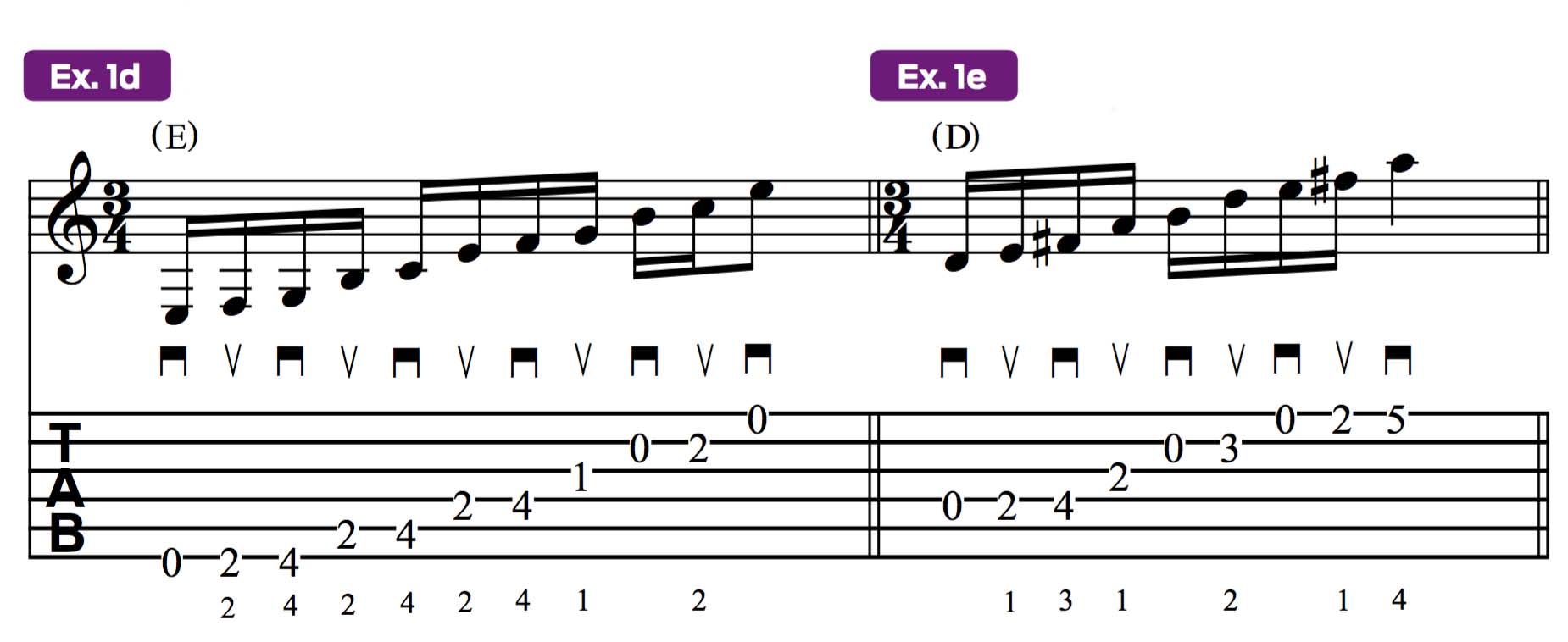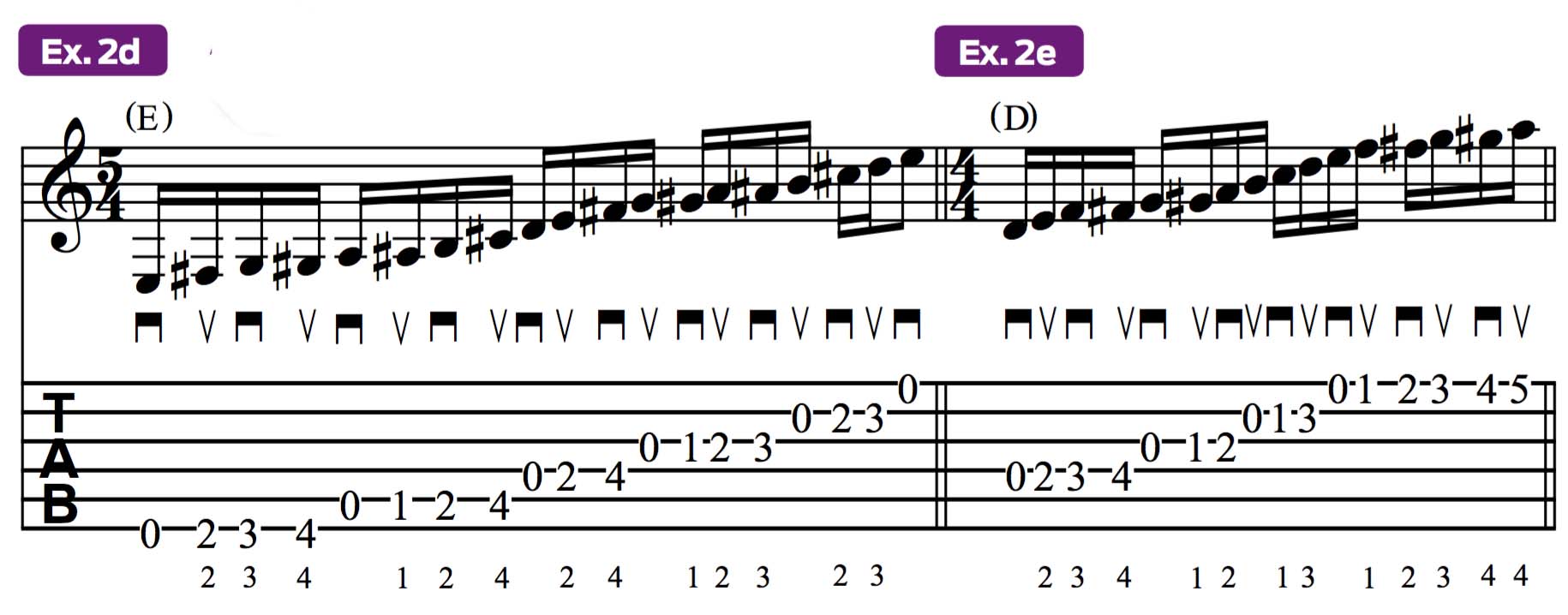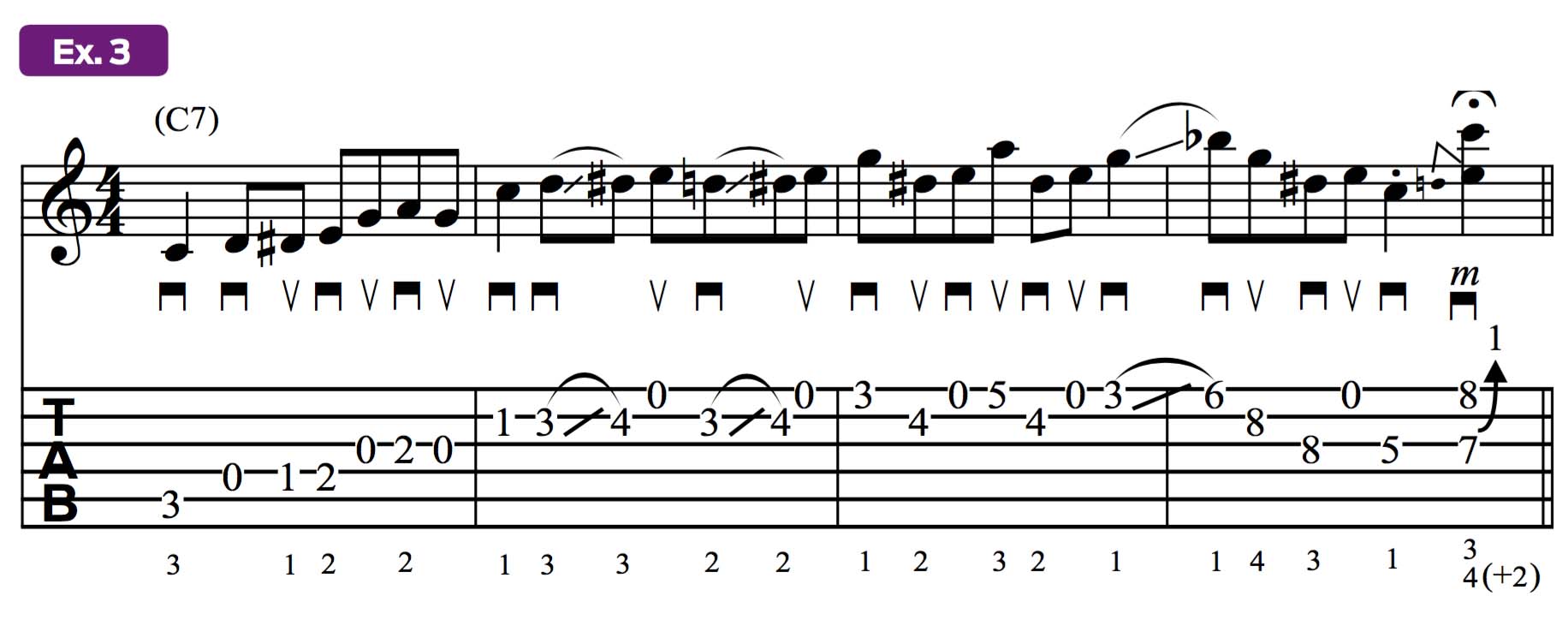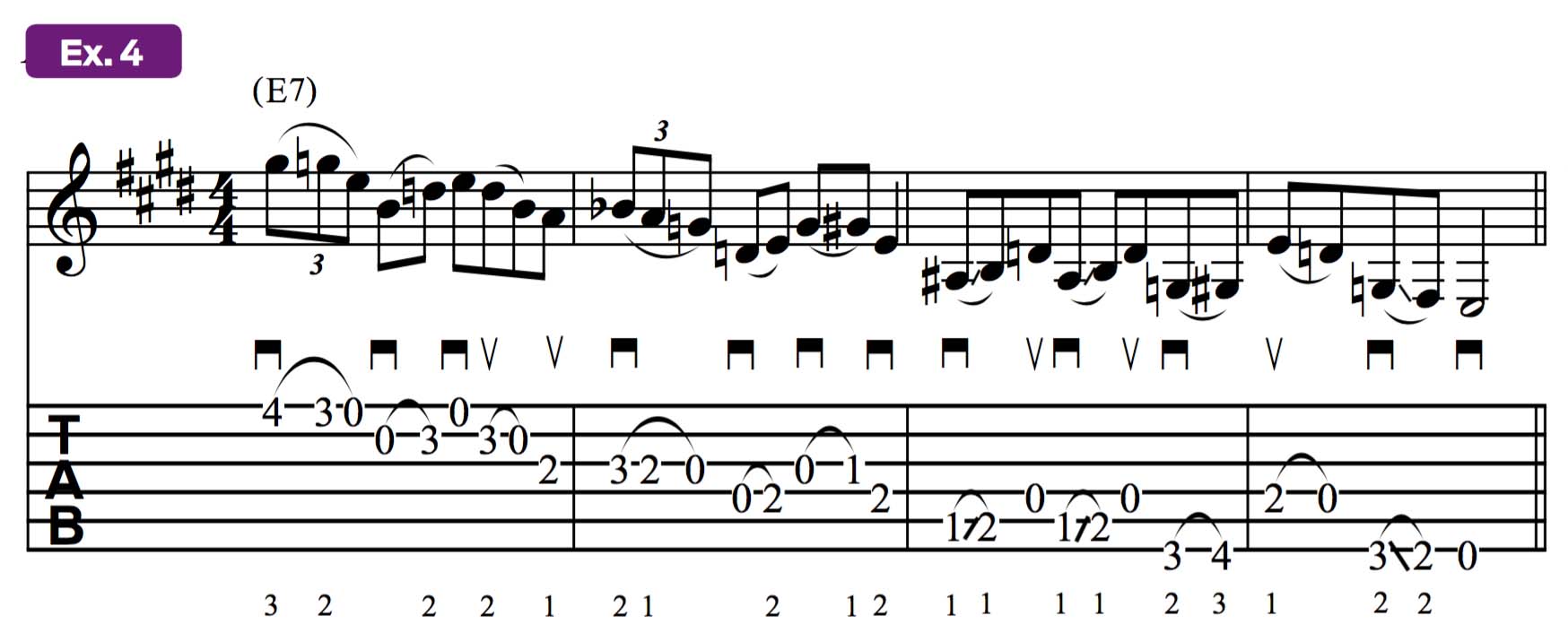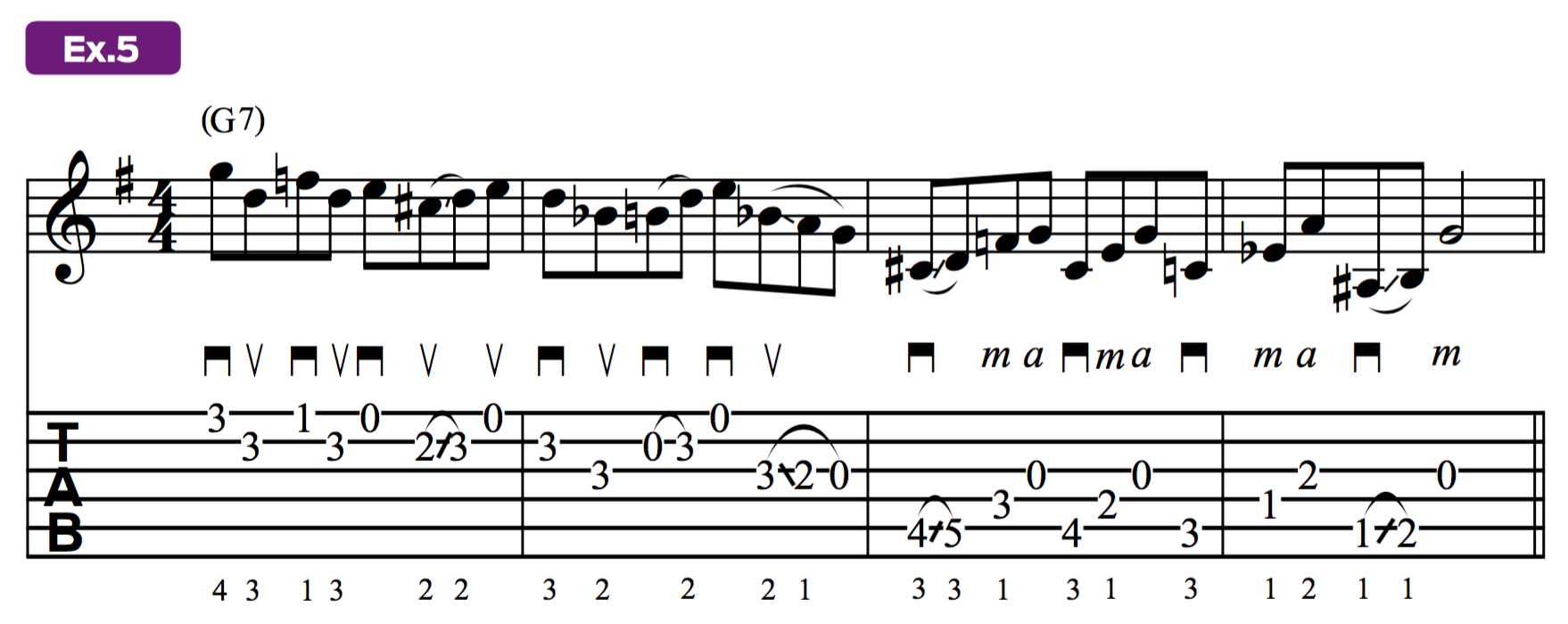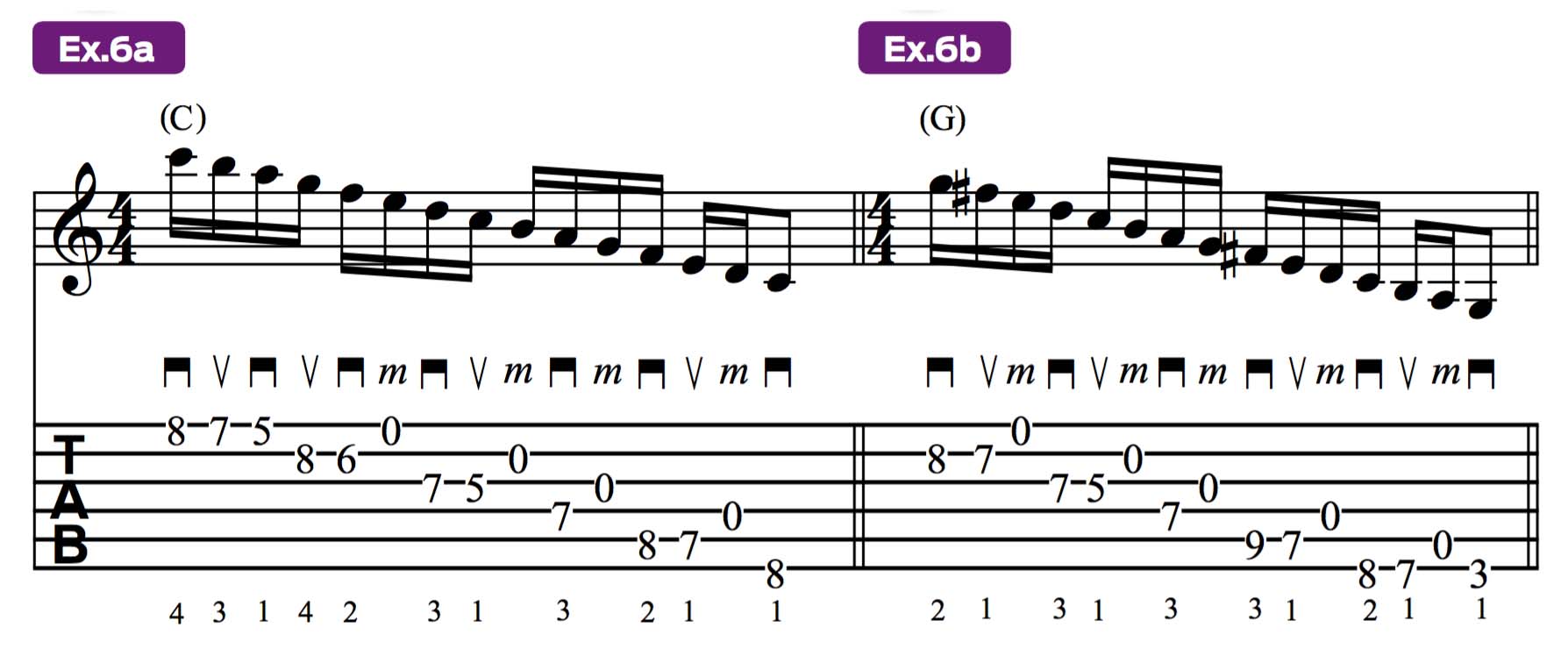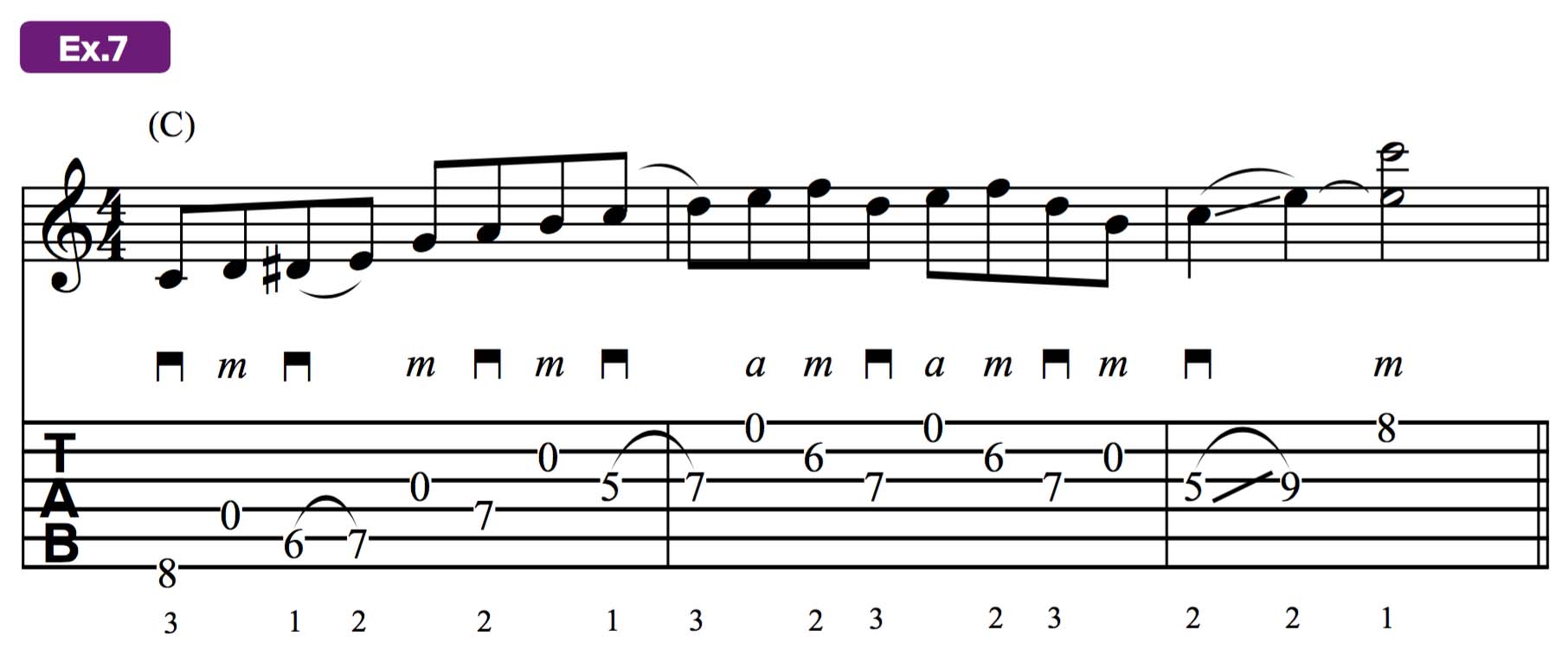Learn the Power of Open-String Country Guitar Licks in the Style of Vince Gill, Brent Mason, and Albert Lee
Open strings mean tonal power and fretless convenience, and they help you put some zip into your licks.

The tasteful application of open-string licks is a cornerstone and hallmark of polished country lead-guitar playing, right up there with chicken pickin’ and bending the strings of a Fender Telecaster.
Every great country picker, from Chet Atkins to Brad Paisley, has a cache of open-string licks that they can employ at the drop of a hat in various guitar-friendly keys (namely the ones without “sharp” or “flat” in their name).
Owing a considerable debt to the rolling banjos and cascading fiddles of bluegrass masters like Earl Scruggs and Kenny Baker, country guitar legends like James Burton and Albert Lee seamlessly wove open strings into the fabric of their technique, crafting blistering open-position runs and complexly layered melodies filled with chiming open notes.
These cool-sounding techniques have influenced many other modern country lead guitarists, such as Brent Mason and Vince Gill, who have used them to create tastefully dazzling licks of their own.
In this lesson, we’re going to dive into various approaches to harnessing open strings, including bluegrass-style 1st- and 2nd-position runs and the incorporation of open notes into patterns and shapes played past the 5th fret.
Be sure to pay attention to the fret-hand and pick-hand fingerings indicated here, many of which are essential to performing the line as intended.
Some exercises use basic flatpicking while others incorporate hybrid picking, in which certain notes are flatpicked and others are picked with the bare middle or ring finger, as indicated by the traditional Spanish abbreviations from classical guitar notation: m = middle finger, a = ring finger.
All the latest guitar news, interviews, lessons, reviews, deals and more, direct to your inbox!
The Open Position
Before we start learning licks, let’s establish a solid foundation of open-string scale patterns, to better understand what makes the licks work musically and to give you the necessary point of reference and framework upon which to build your own country-style licks.
We’ll start with what many guitarists refer to as the “open position,” which can be loosely defined as any fretboard shape or pattern that falls within the first four frets and includes the use of open strings.
It’s the bright and sparkly timbre of the open strings, paired with the nearly-as-bright-sound of notes played within the first few frets, that creates that signature bold, “twangy” tone that is so appealing to many listeners’ ears.
Using your electric guitar’s bridge pickup with a clean-ish amp tone, some reverb, and compression is another contributing factor.
Examples 1a-e show a series of open-position major pentatonic scales in the keys of C, A, G, E, and D, using open strings wherever possible and closely overlapping the shapes of the corresponding open “cowboy chords” that are commonly associated with country music.
The five-note major pentatonic scale is a subset of the seven-note major scale, as it includes the latter’s 1st (root), 2nd, 3rd, 5th, and 6th degrees. (The perfect 4th and major 7th are purposely omitted.) And the corresponding major chords, or triads, represent an even smaller subset of notes, made up of just the 1st, 3rd, and 5th scale degrees.
Country lead guitar – including acoustic bluegrass and electric playing – is as much about playing around the aforementioned major pentatonic scales, by adding chromatic passing tones, in the creation of smoothly contoured and memorable lines, similar to what you would also hear in jazz and blues.
Examples 2a-e take the five major pentatonic patterns presented previously and add tones commonly used by country guitarists to embellish them: namely, the 4th and minor, or “flatted,” 7th (b7), which are derived from the Mixolydian mode (intervallically spelled 1, 2, 3, 4, 5, 6, b7), and the flatted 3rd (b3) and flatted 5th (b5) “blue notes” from the minor blues scale (1, b3, 4, b5, 5, b7).
Each of these embellishing tones work well over another cornerstone of country music, the dominant 7th chord, which is intervallically spelled 1, 3, 5, b7.
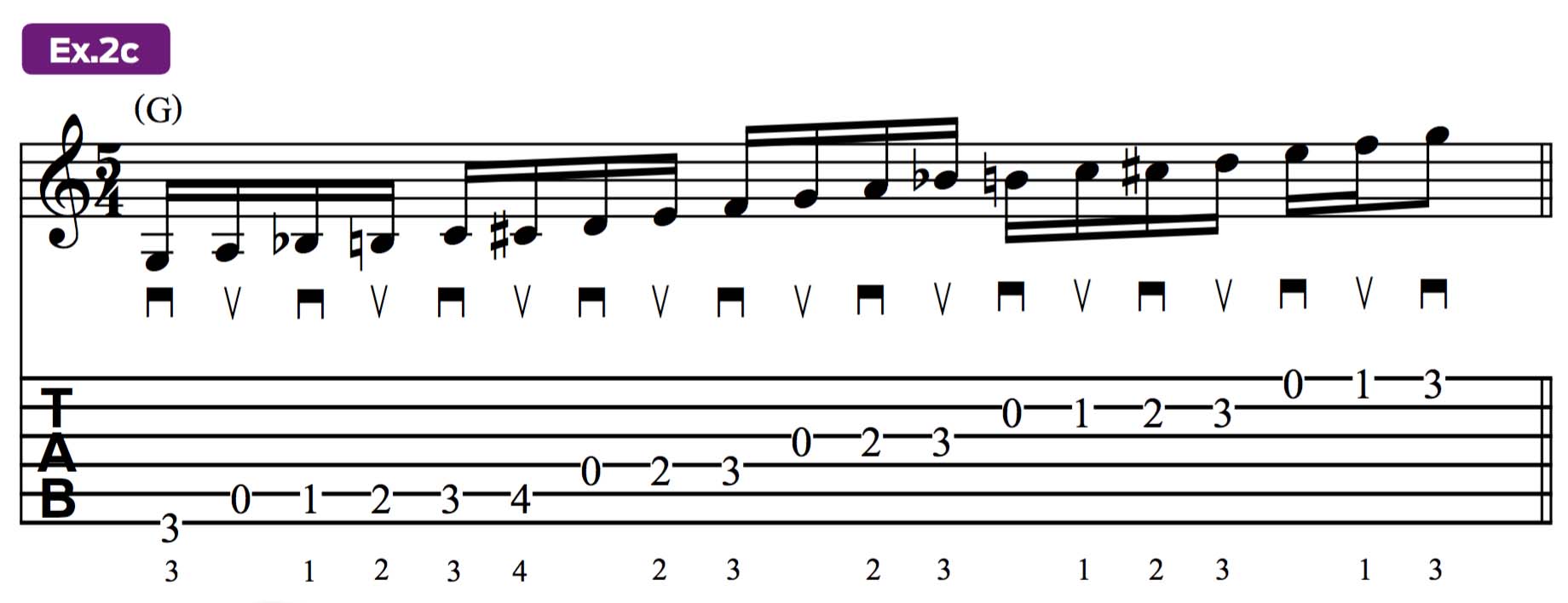
One scale that goes particularly well with a dominant 7th chord is the aforementioned Mixolydian mode, which, as you can see, includes all of the dominant 7th chord tones. And so, the C Mixolydian mode “works” over a C7 chord, G Mixolydian with G7, and so on.
In country lead guitar, as in blues, often the trick is to use the dominant 7th chord as a framework to build your phrasing around, adding chromatic tones to provide expressive melodic tension and resolving that tension by moving to the more stable chord tones.
This type of sound is fundamental to country guitar, so you’ll be seeing it throughout the remaining exercises.
Example 3 is a thoughtfully contoured run that begins with a simple “C lick” that ascends the C major pentatonic scale (C, D, E, G, A) with the added b3, or #2, degree (D# in this case, which is the same note as Eb).
That initial one-bar phrase is typically used to end a bluegrass tune in the key of C and melodically outlines the final C chord right before the whole ensemble plays it together in unison. But the run can also be found in countless electric country guitar solos, as a keen reference to country’s bluegrass roots.
Bluegrass runs have many variations and can be played in any of the open major keys. There are numerous G runs, D runs, etc. In bar 2, we perform a pair of half-step legato finger slides on the B string, from the 3rd fret to the 4th (the notes D and D#), followed each time by the open high E string.
Pitting the open string against the fretted notes adds another half step to the chromatically ascending line and also creates an interesting tension when the open E note rings out against the fretted D#, as the two notes briefly overlap and clash.
This tension continues in bar 3, as we pivot on the B string’s D# note before sliding up to 6th position in bar 4, where we then descend what looks like an Eb major triad (Eb, G, Bb).
But we’re actually still implying a C7 sound here, with an added chromatic approach tone, D#, preceding the open high E string. The lick ends after this with a slick, pedal-steel-style oblique bend on the G and high E strings.
Although the B string is not played here, you’ll want to barre your 4th finger across the top two strings, to ensure a solid “footing” for the high C note.
Example 4 is based around an E7 chord (E, G#, B, D) and the embellished open E major pentatonic pattern from Ex. 2, additionally using notes from the parallel E Mixolydian mode (E, F#, G#, A, B, C#, D) and E minor blues scale (E, G, A, Bb, B, D).
The first half of the phrase is a descending pattern that incorporates the use of hammer-ons and pull-offs to and from the open high E, B, G, and D strings to frame and decorate the E7 chord sound, working our way down to the E root note on the D string’s 2nd fret.
In bar 3, we repeat a three-note grouping, sliding from the 1st fret to the 2nd on the A string (A# to B) then playing the open D string.
After this, we hammer-on from the low E string’s 3rd fret to the 4th (G to G#) then pull-off from E to D on the D string. The run concludes satisfyingly on the low E string, with a descending legato finger slide from G to F# followed by the open low E, which is picked.
Open-String Cascades
Example 5 embellishes a G7 chord sound (G, B, D, F) with several chromatic inflections borrowed from the parallel G minor blues scale (G, Bb, C, Db, D, F) and G major blues scale, which is G major pentatonic with the b3 blue note added (G, A, Bb, B, D, E), plus another “outside note,” which we’ll address momentarily.
We begin by pivoting off the 5th of the chord, D, played on the B string’s 3rd fret, which alternates with higher notes on the high E string (G, F, and E). This is followed in beat 4 of bar 1 by a half-step-below approach to the D note, from the b5, Db (written here as C#, the equivalent #4, to minimize the use of accidentals).
Bar 2 starts on that same D note, then drops down to Bb (the b3) on the 3rd fret of the G string, after which we hammer-on from the open B string back up to D. After playing open high E, slide down the G string from Bb to A (3rd to 2nd fret) and pull-off to the open G note.
Bar 3 takes an interesting turn. As indicated, use your fret hand’s 1st and 3rd fingers to fret a parallel, descending minor 3rd shape on the D and A strings, as you perform a chromatically descending arpeggio pattern that includes the open G string as a ringing common tone. Start by sliding from the 4th fret to the 5th on the A string to frame G7 using the notes D, F, and G.
When you drop down a half step, you will play the notes C#, E, and G, briefly describing an A7 chord sound (A, C#, E, G).
In bar 4, we drop the two-finger shape another half step and add the 2nd finger on the 2nd fret of the G string to play the notes C, Eb, and A, which imply a melancholy Cm6 sound (C, Eb, G, A).
We finish and resolve the line with an upward legato slide from A# to B on the A string (1st to 2nd fret), followed by the bright-sounding open G note. These three exercises are indicative of the kinds of licks that work well in the open position. Use them to inform your explorations in this territory.

Now it’s time to look beyond the open position. One of the most interesting and mind-blowing approaches to incorporating open strings into melodic licks and runs is the use of “cascading” open notes that ring out as you play fretted notes, bringing to mind the sound of a harp, or a piano with the sustain pedal engaged.
This approach is difficult not only because it requires looking at the fretboard in a nonlinear way, but also because, most of the time, we guitarists are trying so hard to keep strings from ringing out that it feels almost counterintuitive to just let them ring out in our melodic phrasing.
The best way to start working these ideas into your vocabulary is to integrate them into your scale routine.
Examples 6a-b depict a series of major scales – in the keys of C, G, D, and A, respectively – with a bit of a twist. Each descending pattern is played with cascading open tones replacing fretted ones wherever possible.
Notice in each one-bar example the use of hybrid picking when skipping strings, with the plectrum picking the fretted tones and the middle finger picking the open strings.
Be sure to practice these scale exercises slowly at first, making sure you let any open notes ring out as long as possible without inadvertently muting them.
After you learn these patterns, feel free to experiment with substituting open strings for fretted notes in any other scale patterns you know. Now let’s look at some licks that explore these ideas.
Example 7 uses the C major scale (C, D, E, F, G, A, B) in an ascending pattern that starts out in 5th position with any available open note used.
Notice, in bar 1, the appearance of the decorative chromatic approach tone D# (A string, 6th fret), which precedes the E note at the 7th fret.
In bar 2, we hold and arpeggiate the fretted notes D and F on the G and B strings’ 7th and 6th frets, respectively, and let those notes ring with the open high E string, creating a tensely dissonant melodic cluster that resolves going into bar 3, as we let go of the F note on the B string and let the open B note ring as we slide from C to E on the G string (5th fret to 8th fret) and cap off the line by adding a high C note on the high E string’s 8th fret.
This open-string “harp” technique works particularly well when applied to arpeggio-based patterns, as demonstrated in Example 8, which is based around an E7 arpeggio.
Beginning in 7th position, we descend the arpeggio from its 5th, B, played on the 7th fret of the high E string, and proceed to move across the strings in a sort of zigzag pattern, using the open high E and B notes in place of their fretted counterparts and additionally adding the open G string as a chromatic b3-to-3 approach to the G# chord tone, played here on the 6th fret of the D string.
Sweetly framing an A7 chord sound, Example 9 is a bluesy lick that begins in 5th position. After starting on the A root note on the high E string’s 5th fret, we perform a half step pre-bend and release, from G to F#, on the 7th fret of the B string before using the open high E as a pivot tone between a pair of chromatic hammer-ons played on the G string.
In bar 2, we use the open B and G strings in a mostly chromatic sequence that leads into a shift up to 7th position, where we describe an embellished D major chord (D, F#, A) in the melody, using the chromatic approach tone and lower-neighbor, F, before F# (8th fret to 9th on the A string) to add bluesy color.
We then play octave D notes, using the open D string, before resolving to the A major chord tones A, C#, and E in bar 3.
Our final offering, Example 10, revisits the key of G and features an interesting and technically challenging hybrid picking pattern that brings both the middle and ring fingers into play, along with flatpicked downstrokes and upstrokes, to perform a one-note-per-string pattern that’s loosely based on what some refer to as a forward banjo roll.
Again, note the incorporation of ringing open strings into the line, as well as chromatic approach tones and passing tones, which lend a bluesy quality to the melody while giving it a nice, smoothly rolling contour. This is a common hybrid picking pattern employed by country guitarists.
Note the incorporation of ringing open strings into the line, as well as chromatic approach tones and passing tones, which lend a bluesy quality to the melody while giving it a nice, smoothly rolling contour.
The twist here is that we’re using our middle finger to pluck open strings throughout, and so each phrase begins with two fretted tones played on descending adjacent strings. Again, be sure to let each string ring out as you move from one grouping to the next.
Practice each of these examples slowly at first and with a metronome to ensure rhythmic accuracy. Feel free to experiment and string various runs and melodic fragments together to fit over a single chord or chord changes.

